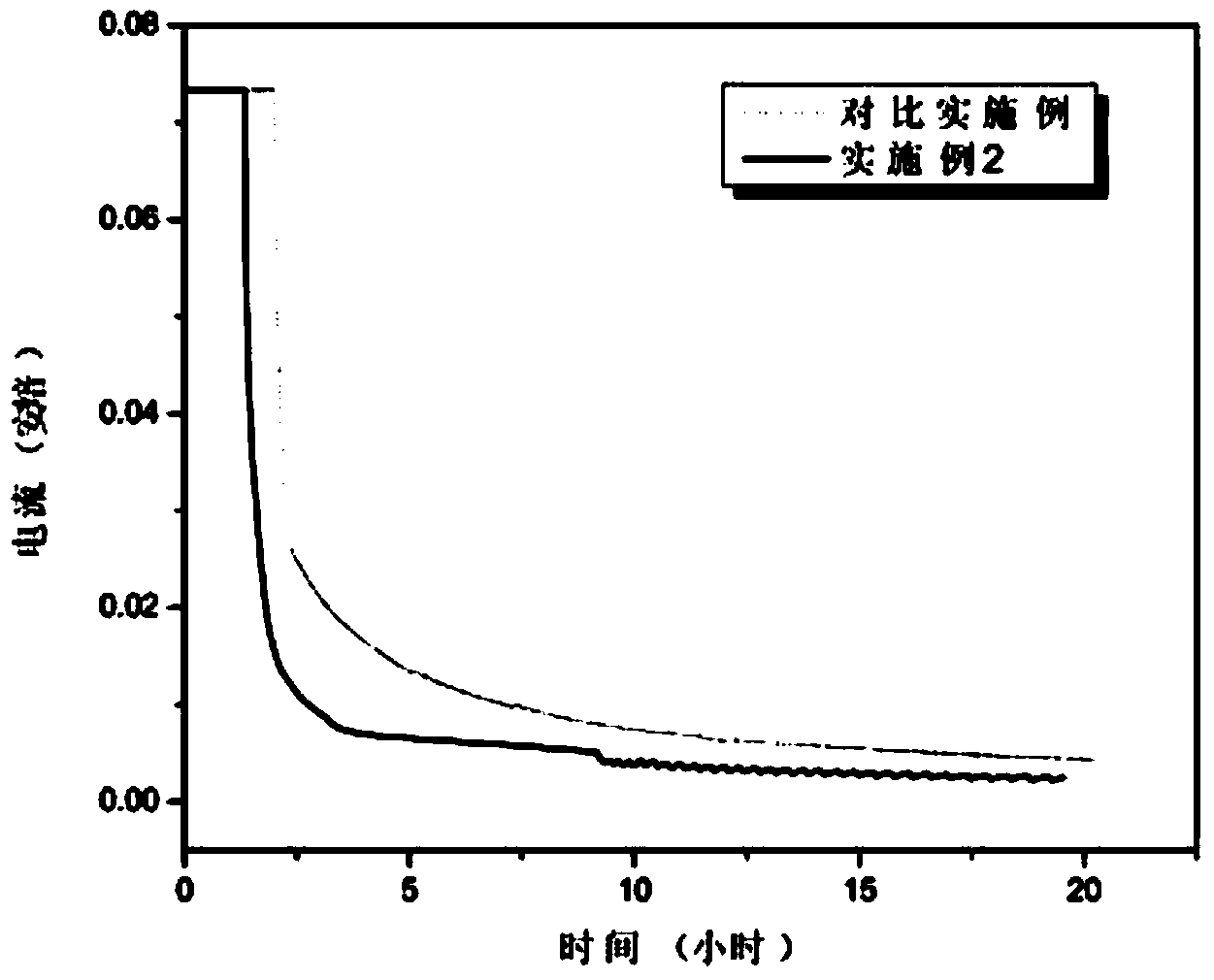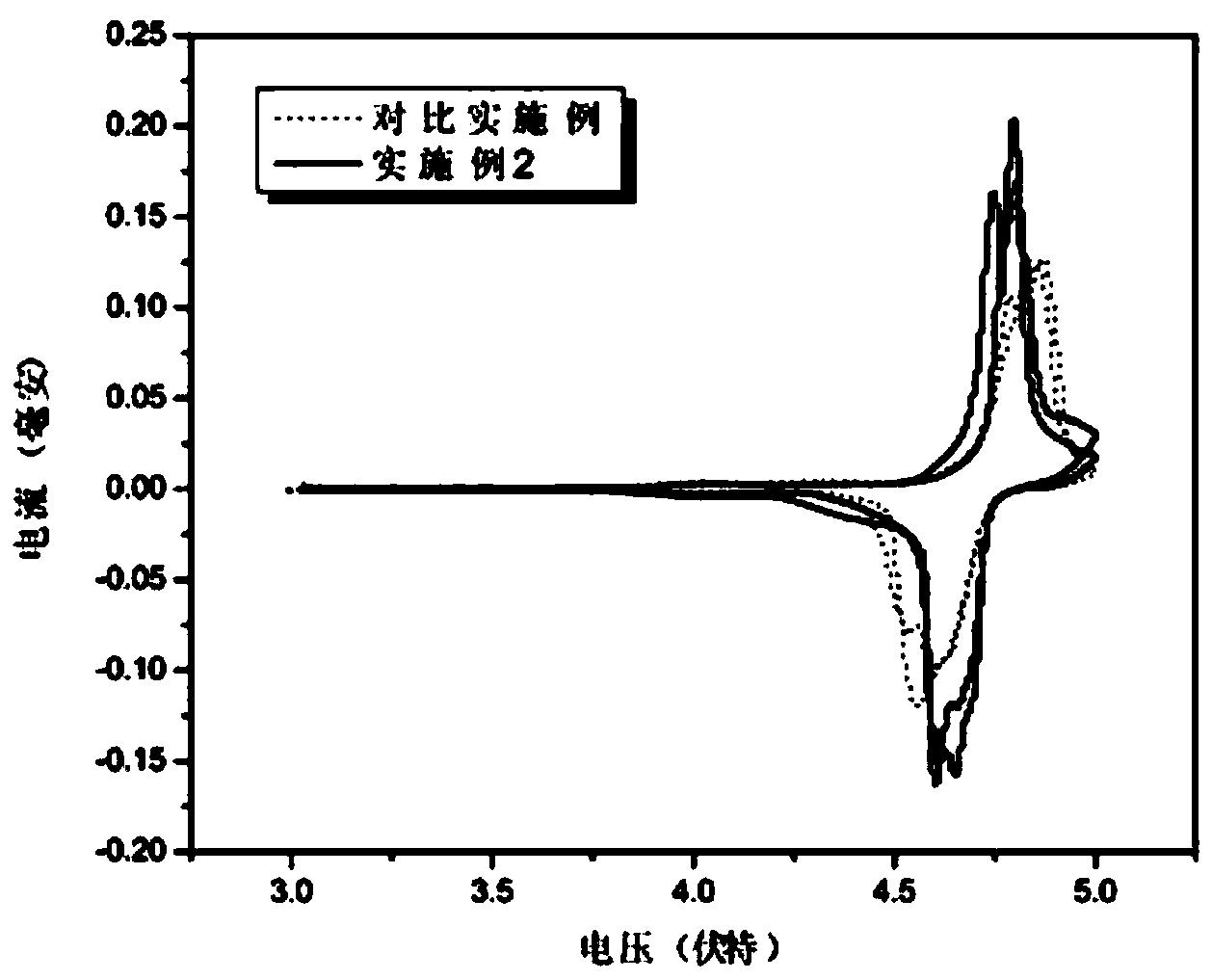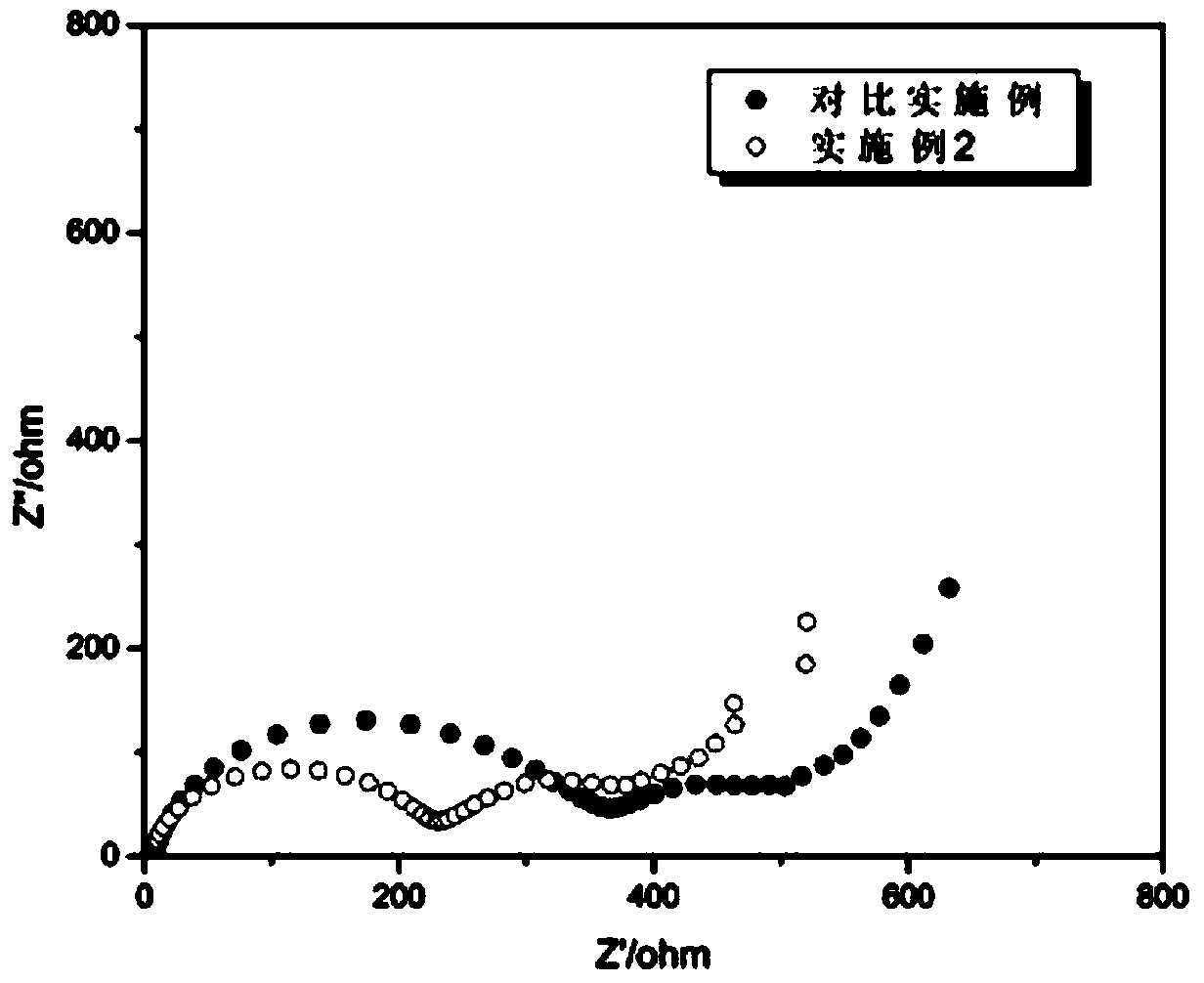High voltage lithium ion battery functional electrolyte and preparation method and application
A lithium-ion battery and electrolyte technology, which is applied in the field of lithium-ion batteries, can solve problems such as damage to positive electrode materials, insufficient stability of positive electrode materials, and performance degradation of battery charge and discharge cycles, etc., to inhibit dissolution, improve cycle performance and safety performance Effect
- Summary
- Abstract
- Description
- Claims
- Application Information
AI Technical Summary
Problems solved by technology
Method used
Image
Examples
Embodiment 1
[0033] (1) Mix the cyclic carbonate solvent ethylene carbonate (EC) and the linear carbonate solvent dimethyl carbonate (DMC) according to the mass ratio EC:DMC=1:1, and use Molecular sieves, calcium hydride and lithium hydride were purified to remove impurities and water to obtain a mixed solvent; at a room temperature of 25°C, the conductive lithium salt LiPF 6 Dissolve in a mixed solvent of ethylene carbonate and dimethyl carbonate, stir evenly to obtain a common electrolyte; among them, the conductive lithium salt LiPF 6 The final concentration in ordinary electrolyte is 1.0mol / L;
[0034] (2) Add tris(trimethylsilane) phosphate to the ordinary electrolyte prepared in step (1), the amount of tris(trimethylsilane) phosphate is 2% of the mass of the ordinary electrolyte; obtain high voltage lithium ion Battery functional electrolyte.
Embodiment 2
[0036] (1) Mix the cyclic carbonate solvent ethylene carbonate (EC) and the linear carbonate solvent dimethyl carbonate (DMC) according to the mass ratio EC:DMC=1:2, and use Molecular sieve, calcium hydride and lithium hydride were purified to remove impurities and water to obtain a mixed solvent; at a room temperature of 28°C, the conductive lithium salt LiPF 6 Dissolve in a mixed solvent of ethylene carbonate and dimethyl carbonate, stir evenly to obtain a common electrolyte; among them, the conductive lithium salt LiPF 6 The final concentration in ordinary electrolyte is 0.8mol / L;
[0037] (2) Add tris(trimethylsilane) phosphate to the ordinary electrolyte prepared in step (1), the amount of tris(trimethylsilane) phosphate is 1% of the mass of the ordinary electrolyte; obtain high voltage lithium ion Battery functional electrolyte.
Embodiment 3
[0039] (1) Mix the cyclic carbonate solvent ethylene carbonate (EC) and the linear carbonate solvent dimethyl carbonate (DMC) according to the mass ratio EC:DMC=1:3, and use Molecular sieve, calcium hydride and lithium hydride were purified to remove impurities and water to obtain a mixed solvent; at a room temperature of 28°C, the conductive lithium salt LiPF 6 Dissolve in a mixed solvent of ethylene carbonate and dimethyl carbonate, stir evenly to obtain a common electrolyte; among them, the conductive lithium salt LiPF 6 The final concentration in ordinary electrolyte is 1.0mol / L;
[0040] (2) Add tris(trimethylsilane) phosphate to the ordinary electrolyte prepared in step (1), the amount of tris(trimethylsilane) phosphate is 1% of the mass of the ordinary electrolyte; obtain high voltage lithium ion Battery functional electrolyte.
PUM
 Login to View More
Login to View More Abstract
Description
Claims
Application Information
 Login to View More
Login to View More - R&D
- Intellectual Property
- Life Sciences
- Materials
- Tech Scout
- Unparalleled Data Quality
- Higher Quality Content
- 60% Fewer Hallucinations
Browse by: Latest US Patents, China's latest patents, Technical Efficacy Thesaurus, Application Domain, Technology Topic, Popular Technical Reports.
© 2025 PatSnap. All rights reserved.Legal|Privacy policy|Modern Slavery Act Transparency Statement|Sitemap|About US| Contact US: help@patsnap.com



